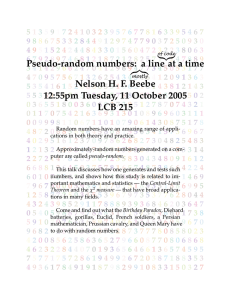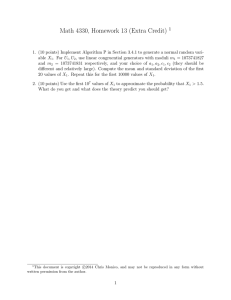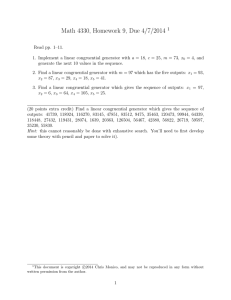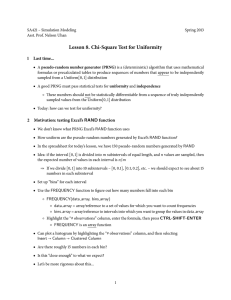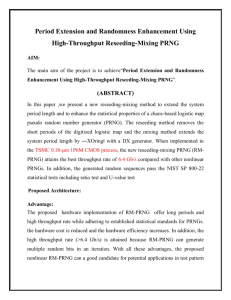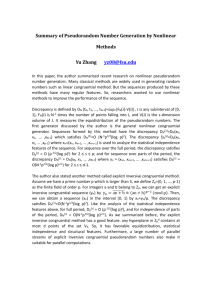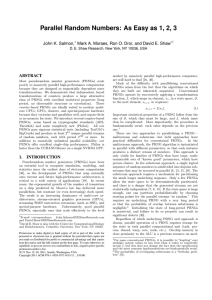Lesson 7. Random Number Generation 1 Overview
advertisement
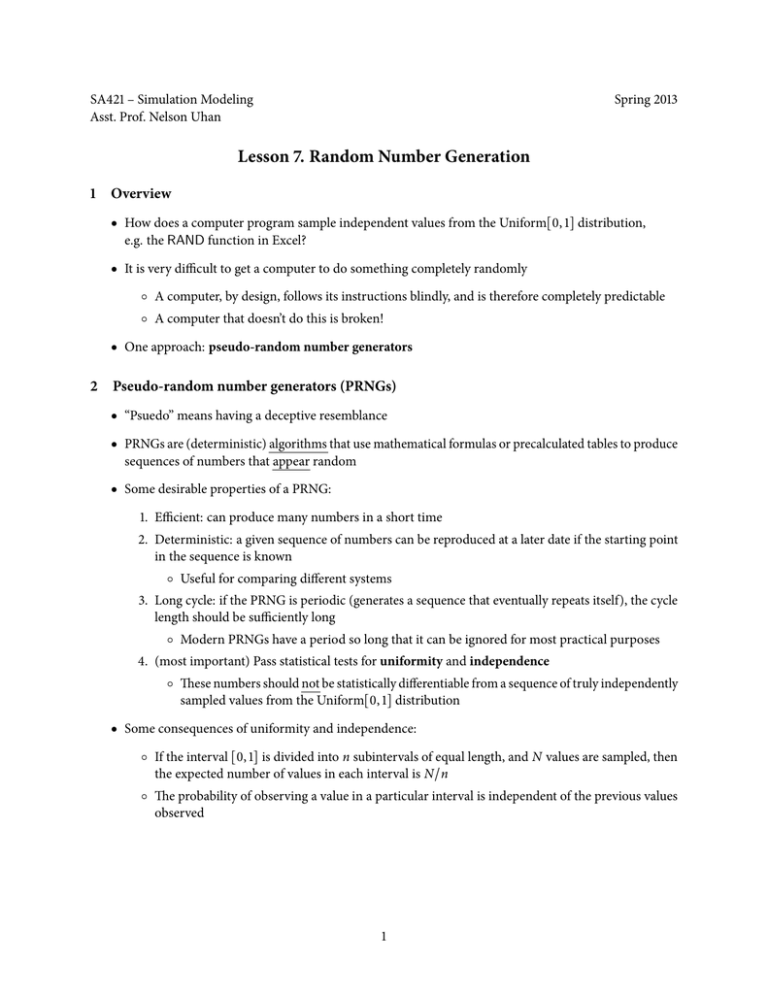
SA421 – Simulation Modeling Asst. Prof. Nelson Uhan Spring 2013 Lesson 7. Random Number Generation 1 Overview ● How does a computer program sample independent values from the Uniform[0, 1] distribution, e.g. the RAND function in Excel? ● It is very difficult to get a computer to do something completely randomly ○ A computer, by design, follows its instructions blindly, and is therefore completely predictable ○ A computer that doesn’t do this is broken! ● One approach: pseudo-random number generators 2 Pseudo-random number generators (PRNGs) ● “Psuedo” means having a deceptive resemblance ● PRNGs are (deterministic) algorithms that use mathematical formulas or precalculated tables to produce sequences of numbers that appear random ● Some desirable properties of a PRNG: 1. Efficient: can produce many numbers in a short time 2. Deterministic: a given sequence of numbers can be reproduced at a later date if the starting point in the sequence is known ○ Useful for comparing different systems 3. Long cycle: if the PRNG is periodic (generates a sequence that eventually repeats itself), the cycle length should be sufficiently long ○ Modern PRNGs have a period so long that it can be ignored for most practical purposes 4. (most important) Pass statistical tests for uniformity and independence ○ These numbers should not be statistically differentiable from a sequence of truly independently sampled values from the Uniform[0, 1] distribution ● Some consequences of uniformity and independence: ○ If the interval [0, 1] is divided into n subintervals of equal length, and N values are sampled, then the expected number of values in each interval is N/n ○ The probability of observing a value in a particular interval is independent of the previous values observed 1 3 The linear congruential method ● Produces sequence of integers X1 , X2 , . . . using the following recursion: ○ The initial value X0 is called the ○ The minimum possible value of X1 , X2 , . . . is ○ The maximum possible value of X1 , X2 , . . . is ● The stream, or the sequence of generated pseudo-random numbers is ● The modulus is often chosen to be a power of 2: binary computations are fast on a computer ● If c = 0, this is a multiplicative congruential method ● If c ≠ 0, this is a mixed congruential method Example 1. In Excel, generate 30 pseudo-random numbers using the linear congruential method with a modulus of 24 = 16, a multiplier of 5, an increment of 3, and a seed of 1. Note: In Excel, MOD(X,m) computes X mod m. Example 2. In Excel, generate 30 pseudo-random numbers using the linear congruential method with a modulus of 231 − 1, a multiplier of 75 , an increment of 0, and a seed of 123,457. This generator was used in the IMSL Scientific Subroutine Package in 1978. 2


